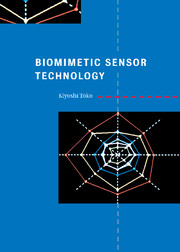Preface
Published online by Cambridge University Press: 23 October 2009
Summary
Humans have five senses: sight, hearing, touch, smell and taste. The sensor plays the role of reproducing the five senses or surpassing them. In the history of sensor development, the sensors corresponding to the receptor parts of sight, hearing and touch have been developed for many years. By comparison, the sensors for simulating the senses of smell and taste have been proposed only recently in spite of the great demand for these sensors in the food industry and in environmental protection. The sensors for the senses of sight, hearing and touch respond to such single physical quantities as light, sound waves and pressure (or temperature), respectively. The end target in developing sensors for these parameters may be high sensitivity or selectivity for the physical quantity concerned, and this can be achieved by such means as semiconductor technology. On the contrary, many kinds of chemical substance must be assessed at once for smell and taste to be transformed into meaningful quantities to describe these senses. It has not been clear what materials can be adequately used to receive chemical substances that produce smell and taste.
This book deals with the development of what are known as the electronic nose and the electronic tongue, that is to say odor and taste sensors. These sensors have been developed on the basis of mechanisms found in biological systems, such as parallel processing of multidimensional information or by the use of biomaterials.
- Type
- Chapter
- Information
- Biomimetic Sensor Technology , pp. ix - xPublisher: Cambridge University PressPrint publication year: 2000



